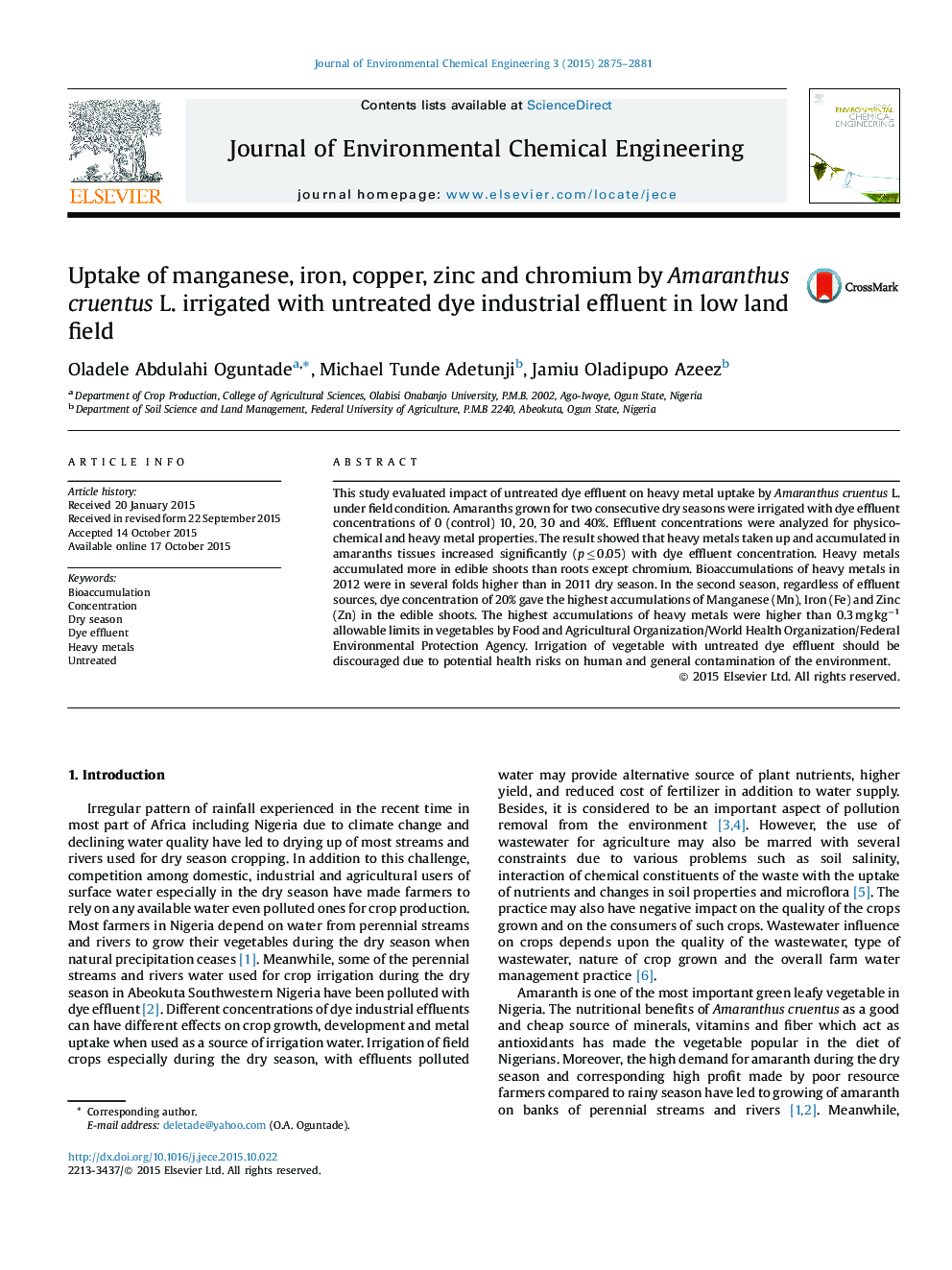| Article ID | Journal | Published Year | Pages | File Type |
|---|---|---|---|---|
| 222094 | Journal of Environmental Chemical Engineering | 2015 | 7 Pages |
This study evaluated impact of untreated dye effluent on heavy metal uptake by Amaranthus cruentus L. under field condition. Amaranths grown for two consecutive dry seasons were irrigated with dye effluent concentrations of 0 (control) 10, 20, 30 and 40%. Effluent concentrations were analyzed for physico-chemical and heavy metal properties. The result showed that heavy metals taken up and accumulated in amaranths tissues increased significantly (p ≤ 0.05) with dye effluent concentration. Heavy metals accumulated more in edible shoots than roots except chromium. Bioaccumulations of heavy metals in 2012 were in several folds higher than in 2011 dry season. In the second season, regardless of effluent sources, dye concentration of 20% gave the highest accumulations of Manganese (Mn), Iron (Fe) and Zinc (Zn) in the edible shoots. The highest accumulations of heavy metals were higher than 0.3 mg kg−1 allowable limits in vegetables by Food and Agricultural Organization/World Health Organization/Federal Environmental Protection Agency. Irrigation of vegetable with untreated dye effluent should be discouraged due to potential health risks on human and general contamination of the environment.
